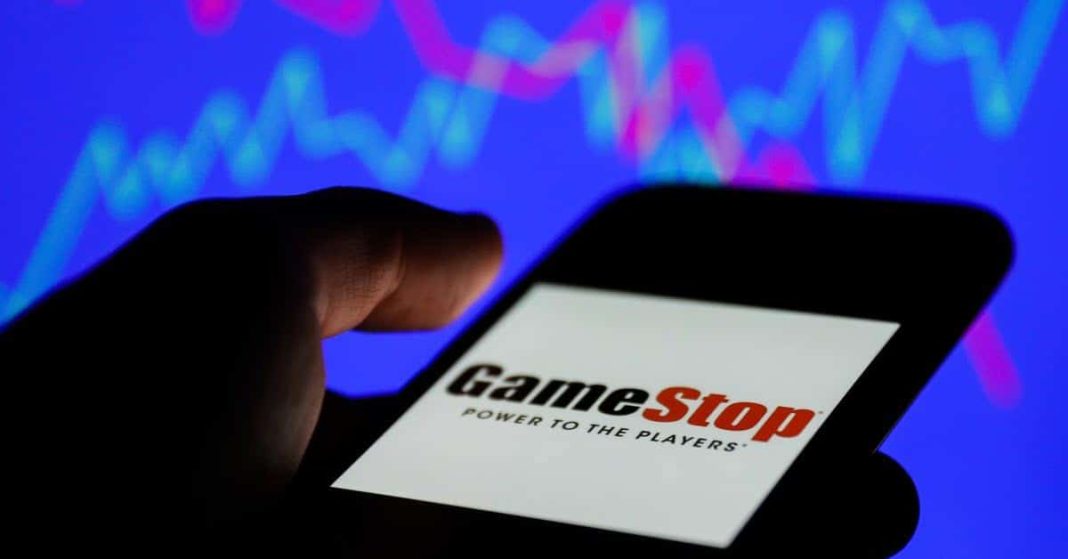GameStop Corporation (GME), a retailer specializing in video games, consumer electronics, and gaming merchandise, has unveiled a bold new strategy centered around “retro” gaming to reclaim its foothold in the gaming industry. Last month, GameStop announced the opening of various retro locations that sell old consoles and hardware, as well as software discs.
In a post on X, formerly known as Twitter, GME shared the logo for its upcoming retro stores, accompanied by a banner featuring video game consoles, including the Super Nintendo, Game Boy, Sega Genesis, Dreamcast, and several others.
In an era where the digital marketplace dominates, GameStop is seeking to revitalize its retail presence by tapping into the growing nostalgia for classic video games and consoles. This shift, coupled with a significant financial move—the termination of its $250 million credit facility—signals a transformation in the company’s business model and approach to liquidity.
A Strategic Shift Towards Retro Gaming
At the core of GME’s new strategy is its decision to focus on retro gaming, a market fueled by renewed interest in classic, older video games. The company plans to transform select stores into dedicated “GameStop Retro” locations, emphasizing iconic consoles from gaming’s golden age, including the Nintendo Entertainment System (NES), Super Nintendo Entertainment System (SNES), and Sega Genesis.
These retro-themed stores aim to offer a tangible in-store experience that is difficult to replicate in the digital age. Customers will have access to classic consoles and a curated selection of vintage titles such as Super Mario Bros., The Legend of Zelda, and Sonic the Hedgehog. In addition, GameStop Retro locations will feature rare games, limited-edition memorabilia, and nostalgic collectibles like posters, action figures, and vintage gaming magazines.
This strategic move is designed to differentiate GameStop from its online competitors, providing an experience that appeals to both seasoned gamers seeking nostalgia and new enthusiasts curious about the classics. In an industry increasingly dominated by digital sales, GME’s retro gaming initiative could offer a fresh reason for gamers to visit brick-and-mortar stores.
Financial Strategy: Terminating the Credit Facility
Alongside its pivot to retro gaming, GME recently made a significant financial decision by terminating its $250 million asset-based revolving credit facility. This move represents a major shift in the company’s financial strategy, signaling confidence in its ability to generate sufficient revenue internally.
By prioritizing operational cash flow and cash in hand as its primary sources of liquidity, GameStop is moving away from reliance on external credit. However, this decision raises concerns about how the company will manage potential cash flow challenges, particularly in an industry prone to rapid shifts in consumer demand.
GameStop’s confidence in its financial health comes after a period of volatility. Following the unprecedented surge in its stock price during the 2021 meme stock frenzy, GameStop has been navigating a path to long-term stability. GME’s stock price performance has been promising, with shares up more than 40% over the past six months and around 17% year-to-date, reflecting growing investor optimism around the potential for growth in the retro gaming market.
Market Potential and Challenges
The retro gaming market has steadily grown in recent years, driven by nostalgia and a renewed interest in physical gaming products. Older gamers who grew up with these consoles are eager to relive their childhood experiences, while a new generation of gamers is discovering the charm of classic games. It presents an opportunity for GameStop to carve out a unique niche in the gaming market.
However, the success of this strategy will depend on several factors. The ability to continuously source and supply vintage collections is crucial, as is GME’s capacity to engage with the community and offer a dynamic shopping experience beyond mere transactions. This initiative could also inspire competitors to explore similar opportunities in niche markets, adding to the competitive pressure on GameStop.
Bottom Line
GME’s new profound focus on retro gaming and its shift towards relying on internal cash flow rather than external credit represents a transformative moment for the company. By tapping into the sentimental appeal of retro gaming, GameStop is seeking to provide a unique retail experience that stands out in an increasingly digital landscape.
Ultimately, the long-term success of this strategy will depend on GameStop’s ability to maintain customer interest in retro gaming, continuously source vintage collections, and create engaging in-store experiences. If successful, this could mark a new chapter in the video game retailer’s journey toward stability and growth.
This week, GME released its much-anticipated second-quarter 2024 results. For the quarter that ended August 3, 2024, the retailer reported an adjusted net income per share of $0.01, surpassing the analysts’ loss per share estimate of $0.09. That compared to an adjusted net loss per share of $0.03 in the prior year’s quarter.
However, the company’s second-quarter net sales came in at $798.30 million, missing the consensus estimate of $895.67 million. The revenue compared to $1.16 billion posted in the same quarter of 2023. Also, GME’s gross profit declined 18.7% year-over-year to $248.80 million.
GameStop must address ongoing revenue headwinds while implementing its retro gaming strategy. Ultimately, for GME’s business transformation, the retailer must balance its new retro gaming strategy with solid financial performance and operational efficiency.


